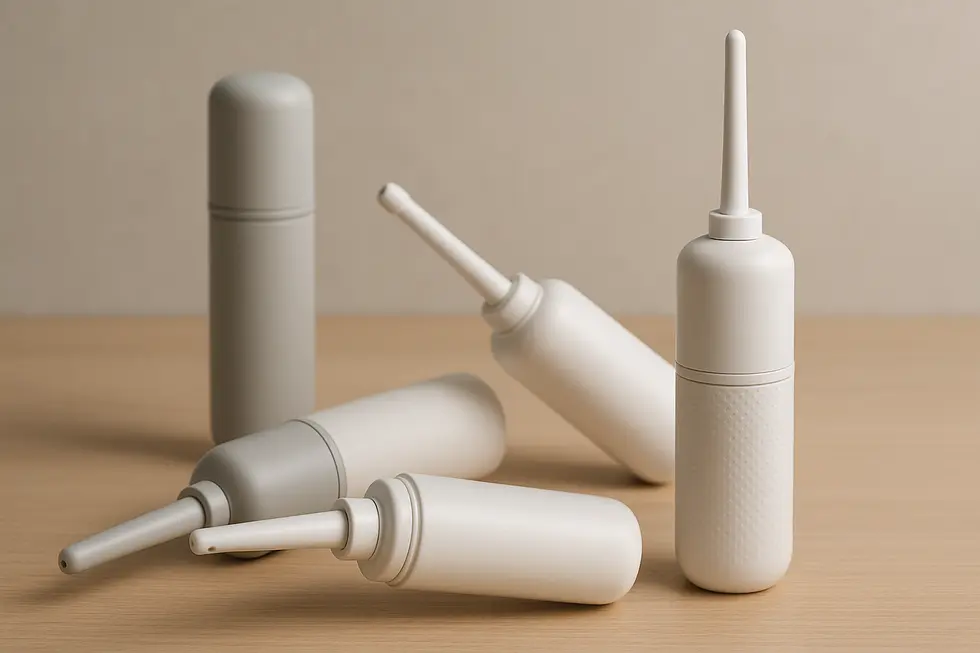Portable Bidet
Mini Portable Bidets: Revolutionizing Personal Hygiene on the Go
Mini portable bidets are rapidly transforming the way families approach personal hygiene. With an emphasis on design innovation, environmental sustainability, and versatile usage, these compact devices are increasingly favored by travelers, campers, and anyone on-the-go. This article explores the cutting-edge advancements in mini portable bidet technology, the eco-friendly and hygienic benefits they offer, and how market trends are shaping their diverse applications for users worldwide.
From Pocket-Size to Powerhouse: How Smart Design and Next-Gen Materials Are Redefining the Mini Portable Bidet

The evolution of the mini portable bidet can be traced through two intertwined storylines: bold design experimentation and rapid material science progress. Early travel sprayers relied on squeeze bottles that were light but far from discreet. Today’s iterations fold like origami, collapse to toothbrush length, or click seamlessly onto an everyday water bottle, proving that portability no longer requires compromise. Engineers achieved this by refining internal geometries to maximise pressure even in hand-sized chambers and by adopting silicone gaskets that seal against a variety of bottle threads, eliminating leaks without bulk.
Power delivery followed a similar arc. Manual pumps remain popular, yet ultrasonic micro-pumps now nestle inside casings thinner than a smartphone, turning USB-rechargeable batteries into days of hygienic sprays. To keep things quiet, impellers ride on magnetic bearings—so the only sound is water. Matching these mechanics is intuitive flow control: single-finger sliders deliver a gentle postpartum rinse or a vigorous backpacking clean, while some nozzles swivel 180 degrees to reach any angle without awkward wrist contortions.
Materials had to keep pace. Acrylonitrile butadiene styrene (ABS) emerged as the hero because it is feather-light, impact-tough, and naturally water-resistant. When paired with high-density lithium cells, the bidet’s total mass dips under 140 grams—lighter than a granola bar—yet the housing still survives a drop on tiled floors. Precision ultrasonic welding fuses these shells, creating IPX6 waterproofing so electronics stay dry even if the unit is rinsed under a tap.
These advances ripple beyond convenience. Reduced reliance on toilet paper means fewer trees felled and less backpack weight burned on multi-day treks. The switch to rechargeable power cuts battery waste, aligning miniature bidets with broader sustainable-gear trends. For travellers weighing grams, seniors seeking independence, or parents chasing mess-free toddler changes, the modern mini portable bidet delivers autonomy in a pocket-ready form.
For a deeper look at how ergonomic shapes and battery tech make handheld portable bidets for travel indispensable, see this in-depth guide. Additional technical diagrams of dual-function sprayers with adjustable flow nozzles can be found in the manufacturer’s specification sheet at the external resource.
Clean Planet, Clean You: How Mini Portable Bidets Slash Waste and Elevate Hygiene

Switching from endless rolls of tissue to a palm-sized spray bottle may seem like a modest gesture, yet it triggers a powerful chain of environmental and personal health wins. Each time a mini portable bidet replaces a wad of paper, it spares trees, bleach, and the 37 gallons of water consumed during the manufacture of a single roll. Multiply that by the hundreds of annual trips an average person makes to the restroom and the savings quickly outstrip the half-liter of water used per cleanse. Because most travel units deliver a pressurised stream only when the trigger is pressed, there is virtually no wasted flow and no standby drip.
The ecological tally extends beyond forests and reservoirs. Compact bidets eliminate plastic-wrapped wet wipes that clog sewers and linger in landfills. Models with manual pumps or squeeze bottles need no batteries, while newer rechargeable designs sip energy through low-power chips and sleep modes. These efficiency tweaks, highlighted in guides focused on the environmental benefits of portable bidets, make the devices a natural addition to any sustainable living kit.
Environmental stewardship would mean little if cleanliness were compromised, yet the opposite is true. A directed stream of water lifts residue more thoroughly than abrasive paper, reducing the microscopic leftovers that cause odour and irritation. Dermatologists note that water cleaning lowers the risk of fissures, haemorrhoids, and urinary tract infections by avoiding harsh rubbing and lingering fibres. Adjustable nozzles and pressure settings let users tailor the spray to sensitive skin, postpartum recovery, or limited mobility without relying on chemical-laden wipes.
Portability ensures these benefits travel wherever you do. Backpackers can clip a 4-gram nozzle to a standard bottle, keeping weight down while maintaining back-country hygiene. Road-trippers charge a handheld unit from a power bank, and parents slip a collapsible sprayer into a diaper bag for fuss-free clean-ups at rest stops. By fitting discreetly into pockets and cabin-approved carry-ons, mini bidets extend eco-friendly habits beyond the bathroom, turning every journey into a small act of conservation.
For additional statistics on tissue consumption and water savings, explore the industry analysis at https://premierbidets.com/blogs/news/bidets-in-america
From Backpack to Bathroom: How Mini Portable Bidets Are Reshaping Hygiene Habits and the Global Market

Market momentum for the humble squeeze-nozzle has accelerated at break-neck speed. Analysts value the worldwide bidet segment at roughly $22 billion in 2024 and expect it to top $32 billion by 2033—an annual climb of about 4 percent. While full-size smart seats still dominate revenue, the fastest unit growth is coming from pocket-sized models that tuck into a daypack or carry-on. Their appeal rests on three converging trends: sustainability, thrift, and freedom of movement.
Every refill of a portable sprayer displaces up to 75 percent of the toilet paper a user would normally grab. That swap spares trees, trims the energy consumed in pulp production, and reduces bulk in landfills. For eco-minded consumers the equation is simple—an ounce of water beats a handful of bleached paper. The green narrative is reinforced by rising tissue prices and looming deforestation regulations, nudging households toward lower-impact routines. Guides such as the eco-friendly portable bidet guide help newcomers calculate the savings and emissions avoided after only a few weeks on the road or at home.
Wallet considerations matter, too. In the United States the average person flushes $120–$180 worth of tissue each year. A compact nozzle costs a fraction of that and lasts for seasons; water usage is negligible. Families that adopt sprayers report payback periods under six months, a figure that circulates widely on social platforms and fuels word-of-mouth demand.
Portability broadens the audience beyond traditional bathroom upgrades. Van-lifers, thru-hikers, festival goers, and international travelers praise the devices for reliable cleanliness in tight or unpredictable quarters. Parents stash them in diaper bags for gentle cleanup, while people with sensitive skin value the reduction in friction and chemicals. Even renters in micro-apartments use travel units as a space-saving alternative to permanent fixtures.
Social media has become the unexpected sales floor. Short videos demonstrating one-handed operation or pressure-adjustable lids routinely rack up millions of views, eroding long-held Western skepticism. As visibility grows, manufacturers respond with lighter materials, collapsible reservoirs, and self-cleaning nozzles—features once reserved for premium bathroom tech now miniaturized for the palm of your hand.
Industry observers note that this cultural pivot mirrors earlier Japanese adoption waves and could signal a permanent shift away from paper dependence (source).
Final thoughts
Mini portable bidets have emerged as essential tools for modern hygiene, offering innovation, sustainability, and versatile utility. As more families embrace these devices for their convenience and environmental benefits, the market continues to grow, demonstrating a significant shift in consumer preferences towards more sustainable personal care solutions.
Experience a new standard of clean with PEGABidet—designed for comfort, safety, and independence. Join thousands who trust us to make personal care simple and dignified. Contact us contact@pegabidet.com
About us
PEGABidet is a brand owned by L.A NEXTGEN LLC, based in California. We design intuitive, hygienic, and accessible bathroom solutions that prioritize safety, dignity, and independence. Our mission is to make personal care effortless and empowering for people at every stage of life.

